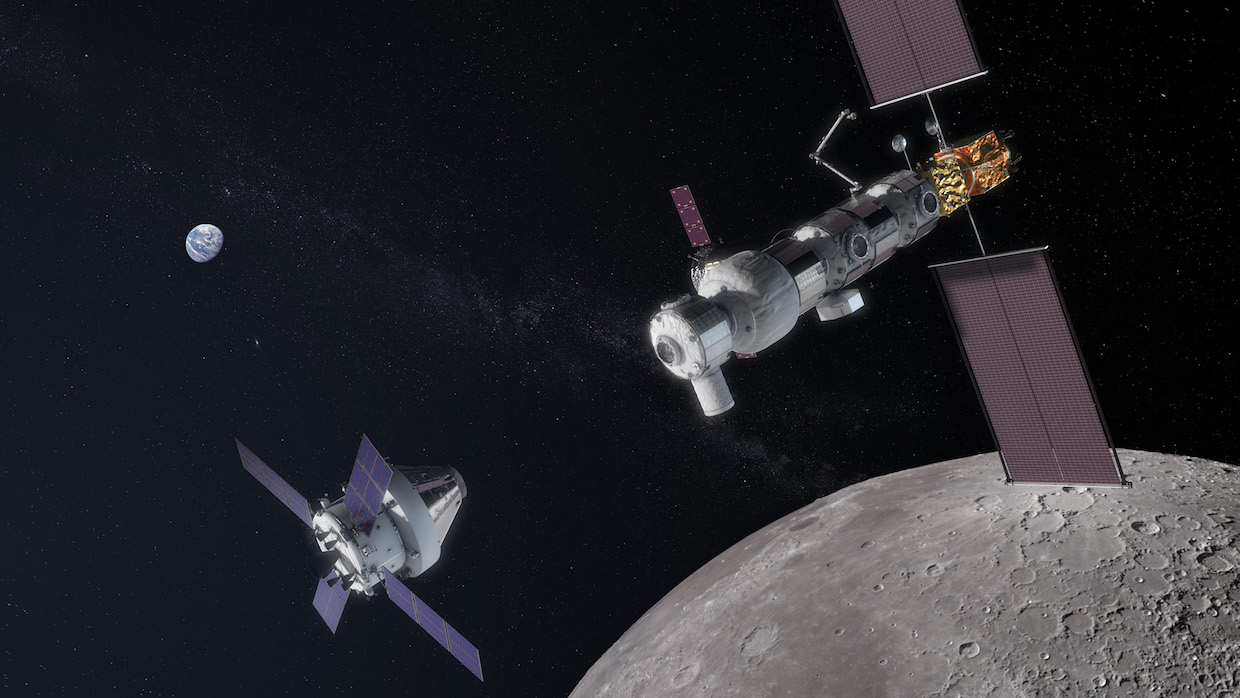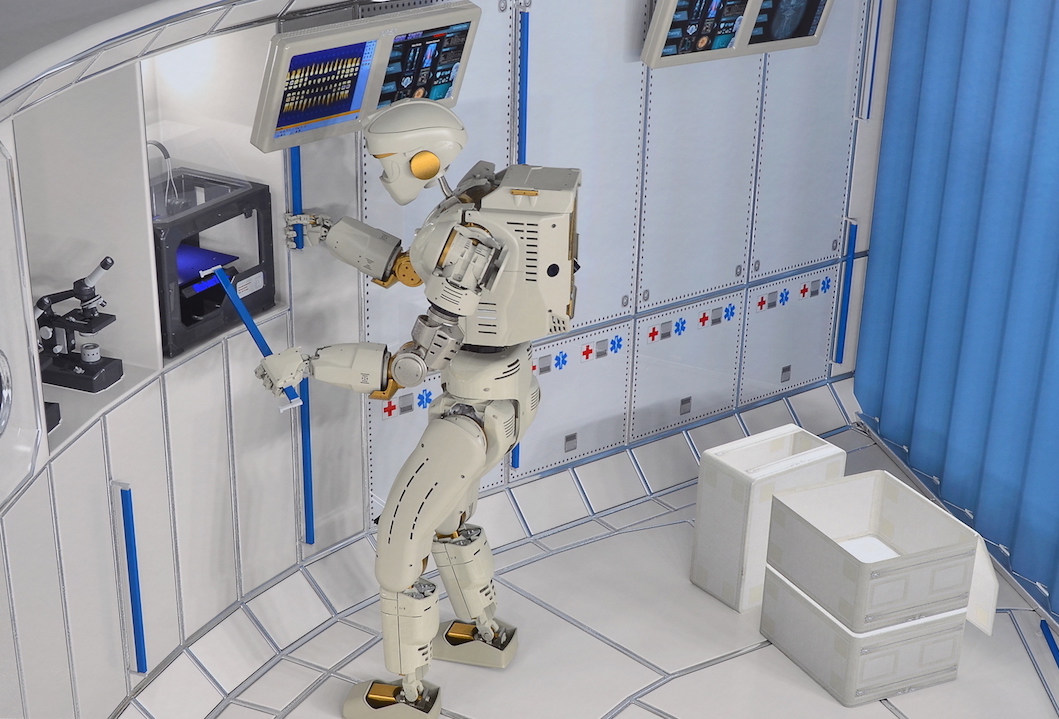Vacancies posted by NASA contractor indicate that development of a new humanoid robot has begun

It has been nearly six years since NASA demonstrated the Valkyrie, an advanced humanoid robot the size of a person. At the end of the DARPA Robotics Challenge, NASA continued to work on the Valkyrie at the Lyndon Johnson Space Center, and provided copies of the robots to several universities. And although this platform is no longer considered new (in robotics, six years is a decent time), the Valkyrie is still capable of much, and retains great potential for research in the field of robotics.
With all of this in mind, we were surprised to see that the engineering company Jacobs from Dallas, which provides a wide range of technical services to everyone, has posted several job opportunities for a robotics job in Houston, Texas, for people who would be interested in working with NASA on the “next generation humanoid robots. "
Here is an excerpt from one of the vacancies :
- Work directly at the Lyndon Johnson Space Center to develop the next generation of humanoid robots.
- Join the team that created the Valkyrie robot at NASA's Robotics Technology Department.
- Based on the successes of the created humanoid robots Valkyrie and Robonaut-2 , expand NASA's ability to introduce human presence and the ability to work with objects in complex, dangerous and remote environments, both in space and on Earth.
The question is why NASA is again taking on the development of a humanoid robot, instead of saving a ton of time and money using the existing platform - Atlas, Digit, Valkyrie, and other more or less accessible humanoid robots? The only answer that comes to my mind is that none of the existing platforms meets NASA requirements, whatever they may be. And if so, what are the requirements in question? An obvious requirement would be the ability to work in the environments NASA specializes in - space, the Moon, and Mars.

The humanoid robot "Valkyrie" on Mars as presented by the artist
NASA's humanoid robots, including Robonaut-2 and Valkyrie, were designed to work on Earth. As a result, Robonaut-2 went to space anyway (it was recently returned to Earth for repair), but its equipment was definitely not intended for work outside the ISS. To work in a vacuum, one has to take into account much more stringent environmental requirements, and on the Moon or Mars the situation becomes even worse - abrasive dust penetrates everywhere.
We know that we can develop robots to work in this kind of environment, because we have already succeeded. But if you are not going to send the robot outside the planet, it makes no sense to ensure its operability, for example, in the conditions of 300-degree temperature drops, which happen on the moon. In the past, NASA focused on designing robots that could be used in the future as software development platforms and technologies that could one day be applied to work outside the planet. The Agency did not engage in excessive engineering surveys in the projects of specific robots so that they could function in such conditions that they most likely would not fall into. But, as NASA is increasingly inclined to return to the moon, perhaps it is time to think about creating a humanoid robot that could do something useful on the lunar surface.

Orbital lunar station "Gateway" (right) and the Orion descent vehicle approaching it, as presented by the artist
Another possibility that comes to my mind, and perhaps more likely, is that this new humanoid robot will be a direct descendant of Robonaut-2, designed to work at the gateway orbiting lunar station. Some of the NASA robotics we’ve talked to recently have emphasized how important robotics will be to the work of the Gateway:
Trey Smith, Ames Research Center: At NASA, everyone is looking forward to working on the Gateway space station, which will be in orbit around the moon. We do not yet have exact plans for what will happen at the Gateway station, however, in general, everyone agrees that robots for working inside space stations are very important. Therefore, it will not be surprising to see a “Robonaut” type mobile manipulator or a freely moving robot like Astrobee on the “Gateway”.
If an unmanned cargo ship docked to the “Gateway”, which is full of cargo to the ceiling, and there is no command in the “Gateway” at that moment, it will be very useful to have a robot at the station that can take all this cargo, unpack it, remove all things, and then to undock the cargo ship before the team arrives so that the team members do not have to spend their time on this.
Julia Badger, NASA, JSC: One of the systems present at the Gateway station will be station robots. They will not necessarily be similar to Robonaut, but their functions will be similar - they will be mobile, they will be able to carry loads between different modules, perform complex manipulations with objects, inspect the insides of panels, and similar things.

The humanoid robot "Valkyrie" works at the "Gateway" station (artist's performance)
Since people will not always be at the Gateway station, it will be very important to ensure a constant robotic presence so that everything works at the station when no one is home, and at the same time save resources on the grounds that robots do not eat, do not drink, do not consume oxygen , do not require particularly high temperature and do not emit any nasty waste. The robot, obviously, will not be as capable as a person, but if it can solve at least the basic tasks of servicing the station (most likely, thanks to at least partial remote control), it will be very useful there.

NASA’s Robonaut Team Plans Various Mobility and Motion Planning Experiments Using New Robot Legs That Can Grab Handrails on the ISS
The question of whether the robots developed for the “Gateway” will fall into the category of “humanoid” is related to the fact that the “Gateway” is developed for humans, so an effective robotic system will have to interact with the station in much the same way as a human would do. Therefore, we should expect robots with hands, the working bodies at the ends of which can grab objects and press buttons, as well as some systems for moving around - the Robonaut-2 version with legs seems to be a likely prototype, but it will have to be processed so that it can work in space and for this it will be necessary to use all the breakthroughs in equipment for robotics and in computer technology that have occurred over the past ten years.
The Spectrum IEEE magazine team has been annoying NASA for some time with questions about this project, but agency representatives are not yet ready to comment on the situation or even confirm the existence of this project. Everything in this article is only our speculation (except for the vacancy itself, which you may need to consider), and we may be wrong on all counts. As soon as we find out more, we will definitely let you know.